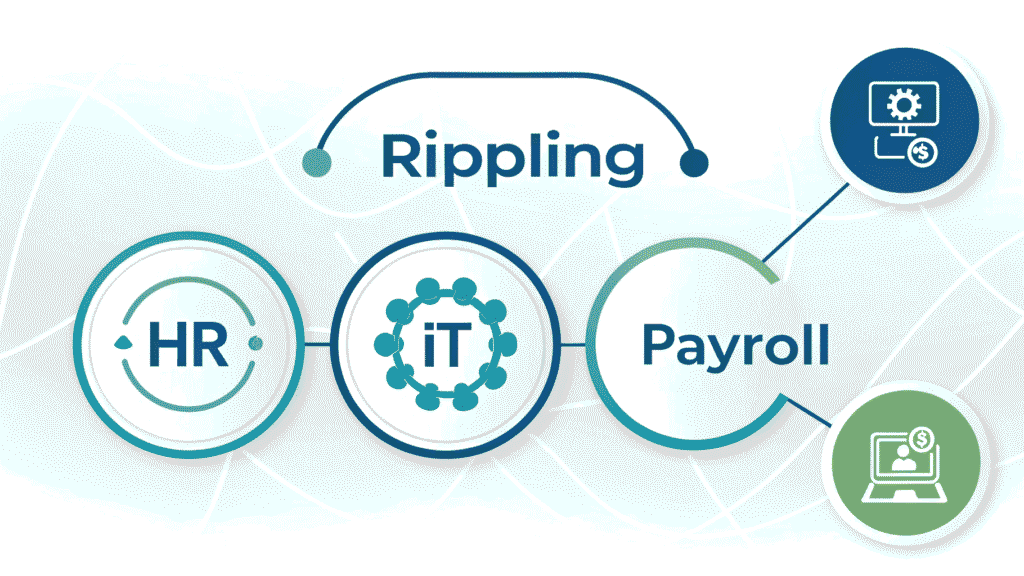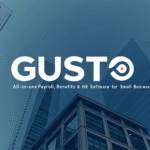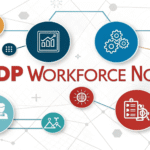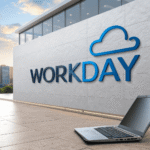
Managing employees across multiple departments shouldn’t require juggling dozens of different software tools. Yet many organisations find themselves trapped in a web of disconnected systems one for Rippling payroll, another for IT management, and yet another for HR functions. This fragmented approach creates inefficiencies, security vulnerabilities, and frustrating experiences for both employees and administrators.
Rippling has emerged as a game-changing solution that consolidates HR, IT, and payroll management into a single, unified platform. By connecting these traditionally separate functions, Rippling enables organisations to streamline operations, reduce costs, and create seamless employee experiences from day one through departure.
This comprehensive guide explores how Rippling’s unified approach transforms workforce management, comparing it to traditional systems and examining why thousands of companies are making the switch to this innovative platform.
What Makes Rippling Different
Traditional workforce management typically involves multiple vendors and platforms. HR teams might use BambooHR for employee records, IT departments rely on separate device management tools, and finance handles payroll through yet another system. Each platform operates in isolation, creating data silos and requiring manual coordination between departments.
Rippling takes a fundamentally different approach by building everything on a unified data foundation. When you hire someone in Rippling, that single action triggers a cascade of automated processes: creating email accounts, ordering equipment, enrolling in benefits, setting up payroll, and configuring security permissions. This integration eliminates the manual handoffs that plague traditional systems.
The platform serves over 20,000 companies globally, from startups to enterprises, demonstrating its scalability across different organisational sizes and complexities. Unlike legacy systems that were retrofitted for modern needs, Rippling was designed from the ground up for today’s distributed workforce.
Core Rippling Modules and Capabilities
Human Resources Management
Rippling’s HR module handles the complete employee lifecycle with remarkable depth. The system manages recruitment, onboarding, performance reviews, time tracking, and offboarding through intuitive workflows that connect seamlessly with other platform components.
Employee onboarding exemplifies Rippling’s integrated approach. New hires complete paperwork electronically, which automatically populates their information across all systems. Background checks, document collection, and compliance tracking happen simultaneously, reducing typical onboarding time from weeks to hours.
The platform supports complex organisational structures including matrix reporting, multiple locations, and various employment types. Advanced analytics provide insights into workforce trends, helping HR teams make data-driven decisions about hiring, retention, and organisational development.
IT and Device Management
Traditional IT management often requires separate tools for device provisioning, security monitoring, and software licensing. Rippling consolidates these functions into a comprehensive IT management suite that works hand-in-glove with HR processes.
When employees join the company, IT administrators can pre-configure their devices and accounts before arrival. The system automatically installs required software, configures security settings, and provides appropriate access permissions based on role and department. This eliminates the common scenario where new hires wait days or weeks for proper IT setup.
Device management extends throughout the employee lifecycle. The platform tracks hardware assignments, manages software licences, and ensures security compliance across the entire fleet. When employees leave, their access is immediately revoked and devices can be remotely wiped to protect sensitive information.
Key IT management features include:
- Automated software deployment and updates
- Single sign-on integration with hundreds of business applications
- Advanced security monitoring and compliance reporting
- Remote device management for distributed teams
Payroll and Benefits Administration
Payroll complexity multiplies rapidly as organisations grow across different locations, employment types, and regulatory environments. Rippling’s payroll engine handles these complexities while maintaining tight integration with HR and benefits data.
The system supports payroll processing in all 50 US states and numerous international locations. Tax calculations, compliance reporting, and direct deposits happen automatically, with real-time updates reflecting any changes to employee information or compensation structures.
Benefits administration integrates seamlessly with payroll processing. Employees can select benefits during open enrollment, with choices automatically reflected in payroll deductions and carrier reporting. The system handles complex scenarios like mid-year life events, COBRA administration, and multi-state compliance requirements.
Unified Platform Advantages Over Point Solutions
Elimination of Data Silos
Traditional workforce management creates numerous data silos that require manual synchronisation between systems. Employee information entered in HR systems must be manually replicated in payroll platforms, IT management tools, and benefits administration systems. This manual process introduces errors, delays, and compliance risks.
Rippling’s unified data model eliminates these silos entirely. Employee information exists in one place and flows automatically to all relevant systems and processes. Changes made in one area immediately propagate throughout the platform, ensuring consistency and accuracy across all functions.
This integration enables powerful automation that’s impossible with disconnected systems. For example, when an employee receives a promotion, Rippling can automatically update their compensation, adjust security permissions, provision new software access, and notify relevant stakeholders—all without manual intervention.
Streamlined Vendor Management
Managing multiple workforce management vendors creates significant administrative overhead. Each vendor has different contracts, billing cycles, support processes, and integration requirements. IT teams spend considerable time maintaining these various relationships and troubleshooting integration issues.
Rippling consolidates vendor management into a single relationship. One contract, one support channel, and one billing arrangement replace the complex web of vendor relationships required by traditional approaches. This simplification reduces costs, improves support experiences, and eliminates integration headaches.
The platform’s comprehensive nature also reduces the need for custom integrations. Rather than connecting multiple best-of-breed solutions, organisations can rely on Rippling’s native functionality across all workforce management areas.
Enhanced Security and Compliance
Security becomes exponentially more complex as the number of connected systems increases. Each integration point creates potential vulnerabilities, and maintaining consistent security policies across multiple platforms requires significant effort and expertise.
Rippling’s unified architecture provides inherent security advantages. Data remains within a single, secured environment rather than flowing between multiple systems. Role-based access controls, audit trails, and compliance reporting work consistently across all platform functions.
The system maintains SOC 2 Type II certification and supports various compliance frameworks including GDPR, HIPAA, and industry-specific regulations. Automated compliance reporting and audit trails provide the documentation required for various regulatory and audit requirements.
Implementation and Migration Considerations
Migration from Legacy Systems
Moving from traditional, disconnected systems to Rippling requires careful planning and execution. The platform provides comprehensive migration tools and support to ensure smooth transitions without disrupting ongoing operations.
Data migration represents the most critical aspect of implementation. Rippling’s migration team works closely with organisations to map existing data structures, clean inconsistent information, and ensure accurate transfer to the new platform. The process typically includes several validation rounds to verify data accuracy before going live.
Timeline expectations vary based on organisational complexity, but most implementations complete within 6-12 weeks. Larger enterprises or those with complex integrations may require longer implementation periods, but Rippling’s experienced implementation team provides detailed project management throughout the process.
Training and Change Management
Transitioning to a unified platform often represents a significant workflow change for employees accustomed to using separate systems. Successful implementations require comprehensive change management strategies that address both technical training and cultural adaptation.
Rippling provides extensive training resources including role-specific tutorials, live training sessions, and comprehensive documentation. The platform’s intuitive design reduces training requirements compared to traditional enterprise software, but organisations should still plan for adequate training time and ongoing support.
Change champions within each department help drive adoption and provide peer-to-peer support during the transition. These advocates can identify potential issues early and help ensure that teams fully leverage the platform’s capabilities.
Cost Analysis: Unified Platform vs Multiple Point Solutions
Total Cost of Ownership Considerations
Comparing costs between Rippling and traditional multi-vendor approaches requires examining total cost of ownership rather than simple licence fees. Traditional approaches involve multiple software subscriptions, integration costs, and significant administrative overhead that unified platforms eliminate.
Rippling’s pricing model consolidates multiple functions into predictable per-employee costs. This approach eliminates the complexity of managing multiple vendor contracts and provides clearer budget forecasting for workforce management expenses.
Hidden costs in traditional approaches include integration development and maintenance, data synchronisation overhead, and the administrative burden of managing multiple vendor relationships. These costs often exceed the nominal savings from choosing individual best-of-breed solutions.
Return on Investment Metrics
Organisations implementing Rippling typically see ROI through several key areas: reduced administrative overhead, improved operational efficiency, and enhanced employee experience. Quantifying these benefits helps justify the investment and measure ongoing success.
Administrative time savings represent the most immediately measurable benefit. Tasks that previously required coordination across multiple systems now complete through single workflows, dramatically reducing the time required for routine operations like onboarding, offboarding, and employee changes.
Operational efficiency improvements include faster onboarding cycles, reduced IT support tickets, and improved compliance posture. These improvements translate to both cost savings and productivity gains across the organisation.
Future-Proofing Your Workforce Management Strategy
The pace of change in workforce management technology continues accelerating. Remote work, artificial intelligence, and evolving compliance requirements demand platforms that can adapt quickly to new challenges and opportunities.
Rippling’s unified architecture positions organisations well for future developments. Rather than coordinating updates across multiple vendors, organisations can benefit from integrated improvements that leverage data and functionality across the entire platform.
The platform’s API-first design also ensures compatibility with emerging tools and technologies. As new workforce management capabilities emerge, they can integrate seamlessly with existing Rippling functionality rather than creating additional silos.
Regular platform updates introduce new features and capabilities without disrupting existing workflows. This continuous improvement approach ensures that organisations always have access to cutting-edge functionality without the complexity of managing multiple vendor upgrade cycles.
Rippling represents a fundamental shift from fragmented workforce management toward unified, integrated platforms that serve modern organisational needs. By consolidating HR, IT, and payroll functions into a single, powerful system, organisations can eliminate inefficiencies, reduce costs, and create exceptional employee experiences that drive business success.

I am Ray Jones Digital
My current occupations: a Digital Marketer, Local SEO expert, Link Builder, and WordPress SEO specialist. Shopify SEO, Ecommerce Store Management, and HTML & WordPress Developer I have been practicing the above mentioned services for more than 10 years now As an SEO expert working with your ongoing projects.



